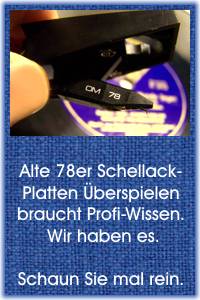Erläuterungen zu diesen 1948er US-AUDIO Seiten
Die hier stehenden amerikanischen Artikel aus 1948 (aus der US-AUDIO) sind teilweise sehr gewöhnungsbedürftig, weil sie erstens aus einer längst vergangenen Zeit stammen und zweitens, weil dort in den USA ganz "anders" gedacht wurde als bei uns in Old Germany oder in Europa.
Vergleichbar mit unseren deutschen Hifi-Magazinen etwa ab 1962 ist jedoch, daß auch diese Zeitschrift ihre Anzeigen- Kunden und -Leser (be- oder ab- ?) werben mußte.
Die Ausgaben der US-AUDIO von 1947 bis 1958 liegen in teilweise ganz miserablen PDF-Dateien vor, in denen die Reihenfolge der Seiten teils völlig wirr ist. Der Aufwande, einen einzigen Artikel komlett zusammenzubauen, ist daher erheblich. Die Fotos sind so gräuselig schlecht, daß sie nur in Ausnahmefällen eingebaut werden.
.
• ONE of the primary aims of this magazine is, of course, to publish the best technical articles in the audio field. But we want also to present them in most readable fashion.
Because we have had the whole-hearted cooperation of a group of enthusiastic and thoroughly competent audio engineers, we have been able to publish a great many articles which are both important technically and also easy to read.
As a result, latest surveys show that Audio Engineering is now preferred over all other technical magazines by a most discriminating group, the chief engineers of broadcasting stations.
As the magazine grows in influence and prestige, it attracts more and more prominent authors, most of whom have been accustomed to publishing their findings in more academic journals.
Thus we are receiving an increasing number of important articles which merit publication, but are written in stereotyped, cut-and-dried form. I often wonder why our engineering schools and colleges train students to write in such a stilted form.
Why should an article start off with "INTRODUCTION" as a paragraph head? If you ever find a first paragraph that isn't just that, I'd like to see it. Another thing - and this is much worse - why interrupt the story every few lines with mathematical equations which, no matter how pertinent, make it very difficult to find out just what the writer is trying to say?
When we can catch the author before he has produced one of these academic monstrosities (akademische Monster), we shoo him off (wir vertreiben ihn) this form of presentation, and the result is generally an article interesting and easy to read.
Often, of course, math is necessary. But even then it can usually be tucked away in an appendix. Those who feel that all important articles should be mathematical are referred to Major Armstrong's classic article on frequency modulation (Proc. I.R.E., May, 1936) which runs to 31 pages and contains but one equation - in arithmetic.
Yet most of the academic articles which stem from Armstrong's fundamental disclosure tackle the subject with Bessel's functions, which few can use because they are taught only in graduate courses.
Naturally, the idea of informal presentations can be carried too far. Chatty technical articles are generally pretty awful, as are those with an overdose of humour.
In general, if an author tells his story in the same easy language he would use in explaining it verbally to another engineer, it will be most effective in print.
AES GROWING
• Announcement of the forming of a San Francisco Section of the Audio Engineering Society adds West Coast representation to this rapidly growing organization.
Acting Chairman is I.R. Ganic. Other officers are Walter Selsted, acting vice-chairman; Don Lincoln, secretary; Frank Lennert, treasurer. Committee appointments are: J. Alan O'Neil, Harold W. Lindsay, admissions; Ross H. Snyder, meetings; Dick Beck and Jack Hawkins were designated to represent the group for the national nominations committee.
It is really too bad that no AES group has yet been formed in the Chicago area. Undoubtedly there are hundreds of audio engineers who live in Chicago and its suburbs who would like to join and if those interested will address their inquiries to this office, we'll try and help them get started.
While we're on the subject, don't forget that there is a chapter of the AES in the Twin Cities area. John Goodell of Minnesota Electronics, 6th and Minnesota Sis, St. Paul, Minn, heads this group.
PIX (Cover-Bilder)
• We are very happy about the cover picture and the portion of it that heads the "Record Revue" this month. Winston Wells did it, proving that a good radio engineer, organist, portrait painter, pianist, and writer, can also do exceptionally fine photographic work.
Incidentally, we are on the lookout for other unusually striking photographs for cover pictures. These should deal with some phase of audio work and should be so composed that our Audio Engineering slug can be placed in the upper left-hand section without covering an important part of the picture. If you have something that you think might be suitable, please tell us about it and enclose a small print, if possible.
J.H.P.

